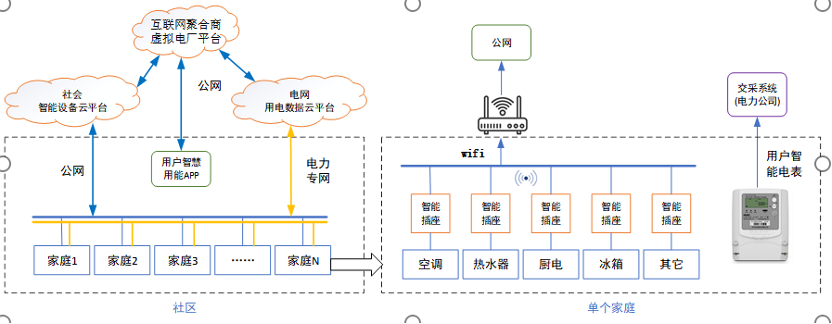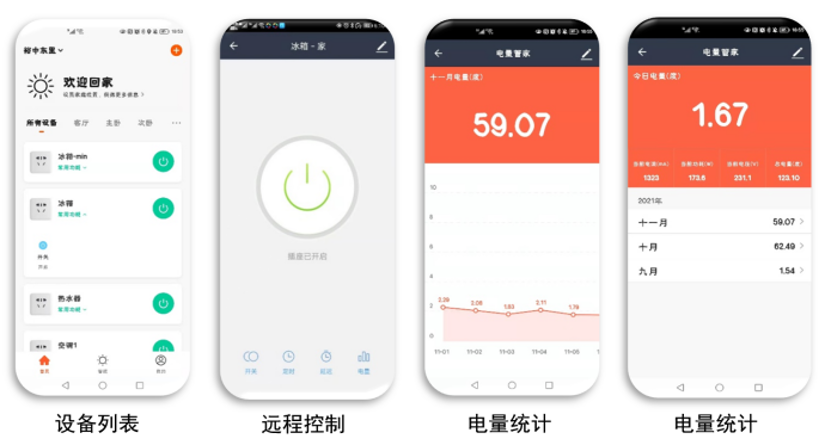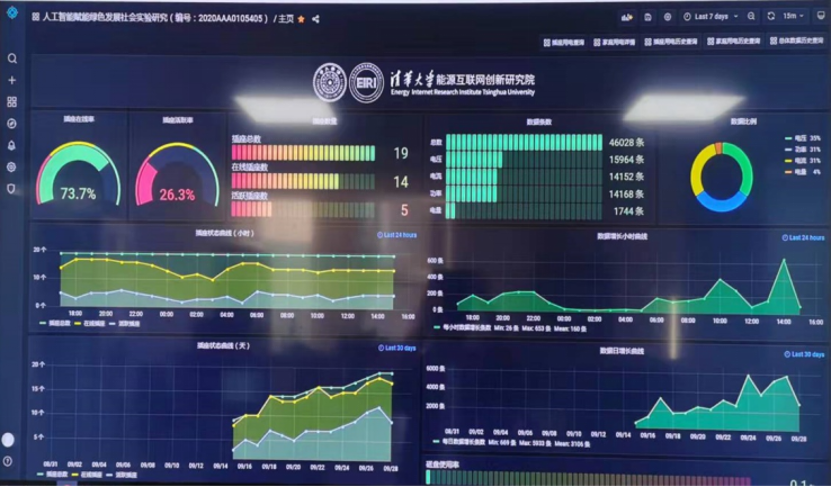On January 18, 2022, the Implementation Plan for Promoting Green Consumption (the “Plan” hereinafter) was jointly issued by the National Development and Reform Commission, the Ministry of Industry and Information Technology, the Ministry of Housing and Urban-Rural Development, the Ministry of Commerce, the State Administration for Market Regulation, the National Government Offices Administration, and the Departmental Affairs Management Bureau of the Central Committee of CPC. Green consumption refers to consumption by various consumer groups wherein the green and low carbon emission principles are observed throughout the related process. The Plan proposes effective measures to motivate the general public consumers to use more green power, including measures to advocate smart home appliances that would help consumers cut down on unnecessary energy use and help regulate the grid peak load by optimizing the on/off time of appliances and starting and stopping them during off-peak hours, urge power grid companies to regularly compile and publish the local green power hours to guide users to plan and use green power, and enhance the time-of-use tariff policy by significantly increasing the price differentials and fluctuation range between peak and off-peak periods to incentivize off-peak energy storage and consumption.
Digital technologies, such as the Internet and AI, should be fully utilized to foster green power consumption among residential consumers. The technological architecture consists of four key technologies, as shown in Figure 1 below:

Figure 1 Technological architecture of green power consumption by residential consumers
互联网聚合商:Internet aggregator
虚拟电厂平台:Virtual power plant platform
社会:Society
智能设备云平台:Cloud-based Platform for Smart Devices
公网:Public network
电网:Power grid
用电数据云平台:Cloud-based platform for electricity consumption data:
公网:Public network
用户智慧:User Intelligence
用户APP: User APP
电力专网:Private power network
家庭1:Home 1
家庭2:Home 2
家庭3:Home 3
家庭N: Home N
社区:Community
公网:Public network
交采系统(电力公司): Power Company’s Metering and Acquisition System
用户智能电表:User’s smart meter
智能插座:Smart socket
空调:Air conditioner
智能插座:Smart socket
热水器:Water heater
智能插座:Smart socket
厨电:Kitchen appliances
智能插座:Smart socket
冰箱:Refrigerator
智能插座:Smart socket
其它:Others
单个家庭:Individual households
Smart Appliances
AI and man-machine interaction technologies have enabled smart appliances in homes. For example, personal intelligent assistant software such as Apple’s Siri and Microsoft Cortana can learn users’ preferences and habits and provide assistance day to day. The smart home appliance portfolios from domestic enterprises such as Haier, Gree, and Xiaomi have created a smart home ecosystem with man-machine interaction and remote operation. Smart sockets from Chinese brands like Xiaomi, Bull, and Tuya not only have remote control function but also feature robust electricity statistics and off-peak power-saving functions, which help users to monitor their power consumption anytime and anywhere and plan their electricity use for energy-saving purposes.
A smart home is one that incorporates building equipment, communication equipment, information devices and automation devices. It is an intelligent platform that combines management and service to create a comfortable and safe living environment. It is the trend of future development of homes.

Figure 2 The real-world application effect of our smart socket
User APP
User APPs will be crucial for remote control and intelligent information push. Currently, “Xiaojing Fish” from JD and “MIJIA” from Xiaomi are the most popular apps in the market. Xiaojing Fish APP provides smart features such as custom mode, timer setting, and electricity price setting, while MIJIA APP boasts a more extensive range of intelligent device ecosystems. Most existing apps feature basic functions such as optimizing on/off time and remote start and stop. However, they still fall short of functions such as user interaction and online authorization. Thanks to a platform of partner manufacturers, the Energy Internet Research Institute has also introduced the Tsinghua Energy Use Trial APP.

Figure 3 Energy Use Trial APP of Tsinghua
Internet User Platform
The Internet user platform will be crucial for green power consumption by residential consumers. Internet aggregation is not just about observing user behavior, collecting information and displaying data, but more importantly, working to categorize, filter, and push huge amounts of information through deep mining and analysis, to inspire and direct user behaviors. Currently, smart home appliance manufacturers have their own Internet user platforms which are yet inaccessible to the general public, and do not offer push function to encourage users to develop green consumption behavior.

Figure 4 User platform of Tsinghua University
Incentive Mechanism
The relationship between residential energy use and energy systems is a complex issue that involves both energy and social aspects. In terms of time distribution, human group behavior may have short-term and long-term implications on energy systems. In the short term, human behavior can be erratic. Considering the psychological and physiological responses to external environmental changes (such as weather change and price fluctuations) that directly impact the human senses, group behaviors in social networks that pursue optimal comfort or maximum short-term benefits may cause significant intermittent fluctuations to the system in the short term, which may lead to the imbalance between supply and demand in the network. In the long term, human behavior is consistent and hard to change over time. Therefore, it is essential to analyze residents' energy consumption behavior from sociological and behavioral perspectives to design policies that encourage green consumption. As it stands now, to encourage consumers' green electricity consumption, explicit incentives or policies such as TOU electricity pricing, rewards for green consumption, credits for carbon inclusion, community ranking, virtual power plant or timely demand responses, are needed to direct consumers to stagger peak energy storage and consumption and encourage green power consumption.
The energy consumption behavior of residents not only has a significant impact on the energy system, but is also associated with social governance. By energy monitoring and other means, the public sector can identify illegal activities such as over-crowded accommodation and pyramid schemes, and strengthen urban security management. At the community level, energy monitoring enables alert and assistance for the elderly to help build a harmonious and smart community that is friendly to the elderly. At the macro level, smart technologies can help reach carbon neutrality goals by optimizing energy structure and allocation efficiency. As an example, Guangzhou has launched the first urban carbon inclusion platform in China, which enables people in Guangzhou to earn carbon coins through low-carbon behaviors such as green travel and water and electricity savings and redeem them for goods. Some carbon emissions can also be traded and monetized at the Guangzhou Carbon Emission Exchange once they are certified.
In summary, reaching the goals of carbon peaking and carbon neutrality requires us to foster green consumption and increase people’s awareness of conservation. It is vital to begin with changing the mindset of energy consumers fundamentally by advocating and developing green consumption habits. Secondly, we should encourage the use of smart home appliances and smart connected sockets that enable remote control of devices, help consumers to reduce unnecessary energy consumption and support power grid peak regulation by optimizing the on/off time and off-peak start and stop of appliances and devices. Lastly, incentive measures or policies are essential, such as electricity pricing based on time of use, rewards for green consumption, credits for carbon inclusion, virtual power plants for residential areas, and improvements in market institutions, policies and regulations.
the Author's Profile
Dr. Dongyuan Zhao is the Director of the Engineering Application Technology Research Office and an expert in research on energy transformation, energy Internet solutions, energy technology and equipment. He is working on several research projects including"Study on Smart Energy Innovation Models and Policy Coordination Mechanisms for National Energy Security" funded by the National Social Science Foundation, "Study on the Growth of New Energy Power System and the Innovation Backing of Its Technical Equipment" sponsored by the National Energy Administration, "Study on the Holistic Impact of AI from Social Experiment (An Experiment Study on New Residential Energy Consumption Model with Smart Interaction)" supported by the Ministry of Science and Technology, and the research on the digital transformation of power grid enterprises.
In the preliminary stage, the team conducted a study titled An Experiment Study on New Residential Energy Consumption Model with Smart Interaction, in which they installed smart meters and appliances (connected sockets) in people’s homes to collect various data on the power consumption behavior and habits, comfort of living, energy-saving awareness, engagement, and use of smart appliances of the participants. They then analyzed the behavioral patterns of social groups to identify the opportunity and orientation for applying AI in community management and even social governance. The team plans to shift its focus on the research of virtual power plants in residential areas in the future.